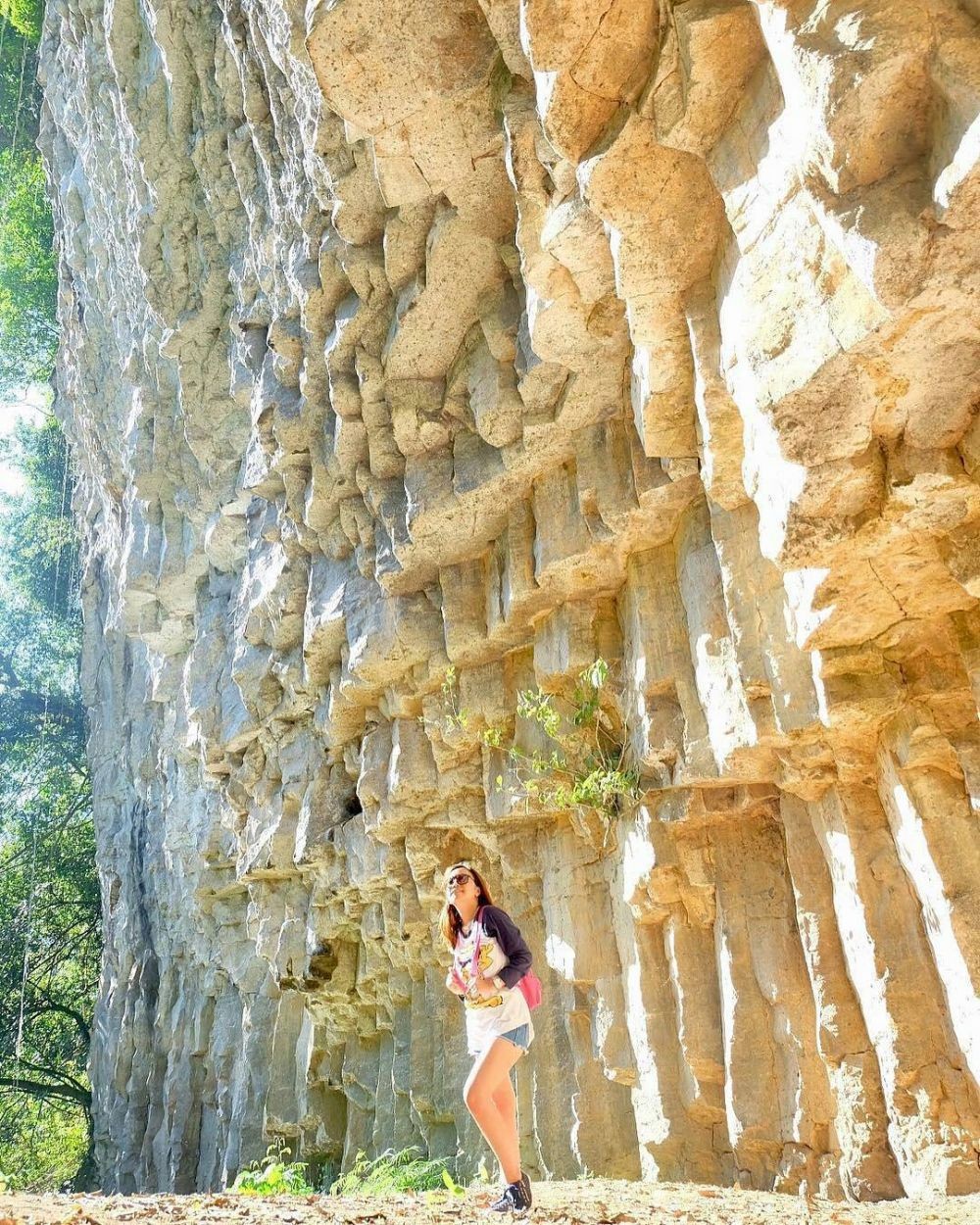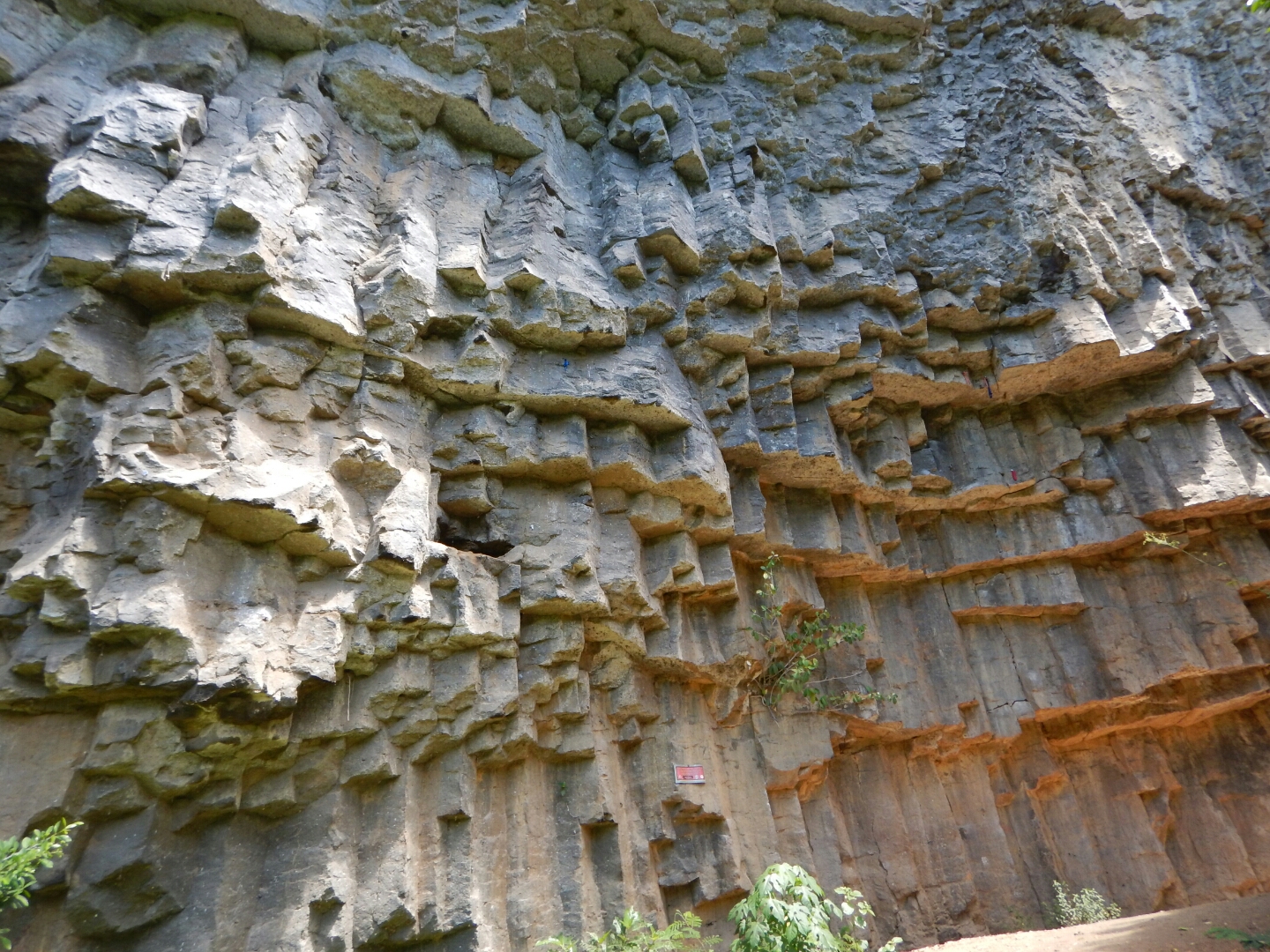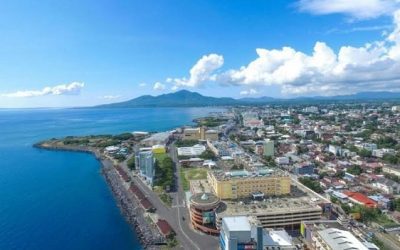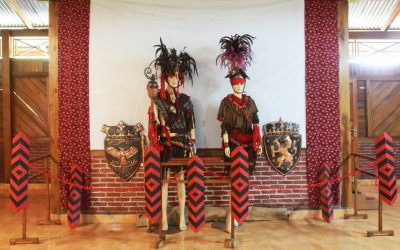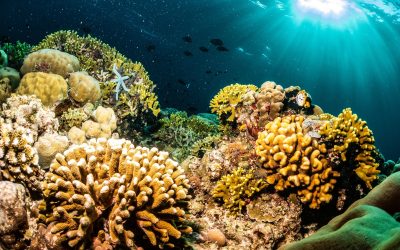Home / Batik Regions – Central Indonesia – Sulawesi Island – North Sulawesi / Batu Dinding Kilo Tiga Cliff
Natural Destination
Experience the tropical nature!
Batu Dinding Kilo Tiga Cliff
Unique photo spot at Batu Dinding Kilo Tiga (Photo: @gabgasun.IDNtimes)
Hiking adventure tourism at Batu Dinding Kilo Tiga (Photo: @KSMTour)
Batu Dinding Kilo Tiga
If adrenaline is one of the main component of your trip, you should definitely visit Batu Dinding Kilo Tiga. “Batu Dinding” means stone wall, a natural spot that seems uniquely carved on the hill. No doubt, this will be the most extreme and difficult wall you have ever climbed.
Natural Tourism Destination
Batu Dinding Kilo Tiga
Tourist Attractions in North Sulawesi
Manado City
The city of Manado is famous as a unique city as it is located in a bay near
Pinawetengan Museum
In Pinawetengan Museum, you can see various collections, such as
World’s Coral Triangle – Bunaken Marine Park
Located in the World’s coral triangle, Bunaken National Park is
North Sulawesi
Batik Motifs
Pinawetengan
The Pinawetengan Batik pattern was taken from a prehistoric inscription in
Manguni Minahasa
Manguni is identified as the symbol of the Minahasa people. Manguni is known as a
Discover
Indonesian
Batik
Motifs
Sido Mulyo
Sidomulyo is one of the classical motifs, which is specifically used for the bride’s costume in
Besurek Rembulan
This batik illustrates praise for God who created the wonderful universe
Kerawang Tegak Aceh
The Vertical Upright (Kerawang Tegak) Motif symbolizes a person who has a strong
Taiganja
Taiganja is a precious gold pendant that shows the social status of the Kaili family. It is
Salakanagara
Salakanagara batik motif illustrates the first kingdom in the Betawi land
Bomba Mawar
This motif means sacred love for family, kingdom, and God; It also illustrates
Daun Sirih
This motif illustrates betel leaves that are used by Lombok communities as traditional
Sandeq
Sandeq Boat is a symbol of the maritime importance of the West Sulawesi region. The greatness of
Kawung
The Kawung motif was created by Sultan Agung Hanyokrokusumo (1593 – 1645) as a symbolic gift for
Awan Berarak
Awan Berarak is a combination of Dayak motifs and Malay patterns. The word ‘Awan Berarak’ means the
Burung Bidadari
Bidadari birds are endemic birds in Halmahera. This motif represents an
Jupri Kembang Teh
Kembang Teh illustrates the tendrils of tea plants that grow in the highlands of
Pohon Hayat (Tree of Life)
The Batik motifs in Lampung are dominated by the acculturation of Buddhist and
Manguni Minahasa
Manguni is identified as the symbol of the Minahasa people. Manguni is known as a
Parang Seling
Parang Seling or “alternating daggers” is a royal batik motif. It is a feminine variant of
Sekomandi
Its philosophical meaning is the eternal union which refers to a saying “until death do us part”
Tanah Liek
The word “Tanah Liek” refers to clay in Minang language. It is also known as
Gumin Tambun
Based on Hindu mythology, this motif symbolizes lucks, abundant wealth, and
Honai
The Honai is inspired by the traditional house of the Papuan community living in
Tubo Kelapa
Coconut tree is a symbol of a good character and strong mentality. It illustrates the more success a person, the more
Wakatobi
It symbolizes the coastal beauty of the Wakatobi island and the symbol of Patra symbolizes
Pattimura
Pattimura is the name of an Indonesian hero who fought against colonialism in
Rumah Mamuju
the Batik motif illustrates the house of Mamuju King with the stairs, located on the left of the wooden stage house
Karawo Pinang
Pinang refers to the Palm areca tree. This motif is considered as the original
Pala Salawaku
This motif illustrates the unique weapons of the Maluku region, namely
Kain Cual
Cual textile tradition has existed since the 17th century. The word “Cual” refers to
Dayak Kamang
Kamang motif is generally found in the Dayak tribe shield because it is believed to
Pinawetengan
The Pinawetengan Batik pattern was taken from a prehistoric inscription in
Prada Papua
The word “Prada” in the Javanese-Indonesian dialect means a batik textile that
Kaharingan
The Kaharingan or ‘tree of life’ based on the Dayak tribes’ belief system. This tree symbolizes
Tampuk Manggis Sasirangan
The motif illustrates the philosophy of the mangosteen fruit, which is
Lontara
The Lontara script itself is a typical ancient script of Bugis and Makassar communities. History records that
Besurek Rafflesia
The term “Basurek” refers to a textile that contains letters or inscriptions
Pati-Pati Pinehiku
It symbolizes the hierarchy in society and the social status of the Mekongga
Gigi Haruan Lidi
The Gigi Haruan Lidi motif is taken from the name of the cork fish and is a symbol of
Hiu Taliyasan
Indonesia is also home to the world’s largest fish, the whale shark (Rhincodon typus). Hiu Taliyasan refers to
Pucuk Rebung Riau
Pucuk Rebung symbolizes heart determination in achieving goals, good luck, and
Srimanganti
The name of the Srimanganti motif is derived from Palace’s hallway that connects to
Daun Simpor
This motif is inspired by the Simpor plant (Dillenia Suffruticosa) which is a typical
Kaganga Tanah Rejang
If Batik Besurek combines Arabic calligraphy motifs, then the Kaganga batik takes
Dayak Taghol
Dayak Taghol has a distinctive style of four curved lines and small dots. This motif represents
La Galigo
La Galigo is a literary work of the Buginese Epic that has 300 thousand epic lines. It is considered even
Gentala Arasy
Built as high as 80 meters, the tower also highlights the historical side of
Lok Baintan Floating Market
As you can imagine, the most authentic thing is that you can buy things and even
Tengkawang Ampiek
With its many advantages, the Dayaks use this leaf in ritual ceremonies. This plant is a symbol of
Teguh Bersatu
This batik motif shows the strength of the people of Kupang. It also represents a sense of
Tikar Natuna
The Tikar Natuna motif is adapted from the traditional making of pandanus mats in
Gamolan
This motif illustrates Gamolan, a bamboo musical instrument of Lampung that is
Biji Kopi
The coffee seeds motif illustrates the pride of local coffee specialities in
Merak Ngeram
The hatching peacock motif has a very deep meaning which refers to the sacrifice and
Enggang Dayak
Local people beliefs that hornbills are an incarnation of the Commander of the Birds. It has supernatural
Parang Rusak
Another meaning behind this motif is an unconquerable spirit, symbolized by
Buketan Bali
The Balinese bouquet (Buketan Bali) is a floral arrangement and the name is
Malinau Cultural Festival
You will witness a unique competition that might not be found other than in
Tenun Bima
The motifs are adopted from Bima woven textile. This pattern has received a great
Daun Lada Hitam
The black pepper motif represents the main commodity of Bangka Belitung
Desa Na Tolu
The Desa Na Tolu characteristic pattern symbolizes the Batak philosophy of existence and
Gurdo Solo
Gurdo or garuda bird is the mount of the Indian god Vishnu. As the Sun Bird,
Angsa Duo
According to legend, the Angso duo batik motif is a pair of swans that are believed to have led Princess
Bale Lumbu
This motif signifies the welfare of the ancient Sasak society. Bale also symbolizes the
Bintik Tujuh
The Bintik Tujuh (Seven Dots) motif has 7 white spots and green color gradation as
Durian Pecah
Broken Durian motifs depict the foundation of faith. The second half signifies the mastery of
Tangerang Herang
Tangerang Herang motif is a symbol of Tangerang city. The Tangerang Herang batik motif consists of
Tabir Tanjung
Tanjung flower is a type of Cherry tree flower, which is commonly found in
Ukir Sentani
The Ukir motif is a batik motif that is inspired by various traditional Sentani wood carvings
Gonggong Beruntun
This motif illustrates that a person should maintain a positive attitude and
Ake Patra
Ake is related to the divinity and the composition of the universe. It is a symbol of
Bekantan Pakis
This motif represents Pakis Haji (Polystichum setiferum), an endemic plant in
Singayaksa
The Singayaksa motif comes from the name of a place where Sultan Hasanuddin used to
Keluak Daun Pakis
The word “Keluak” is a Minang language which means twisted or tangled. The Motif of
Tongkonan
Toraja’s traditional house is called Tongkonan. Tongkonan is a place for
Cengkeh
The clove flower motif is the main commodity of the Tolitoli Regency. This motif represents

